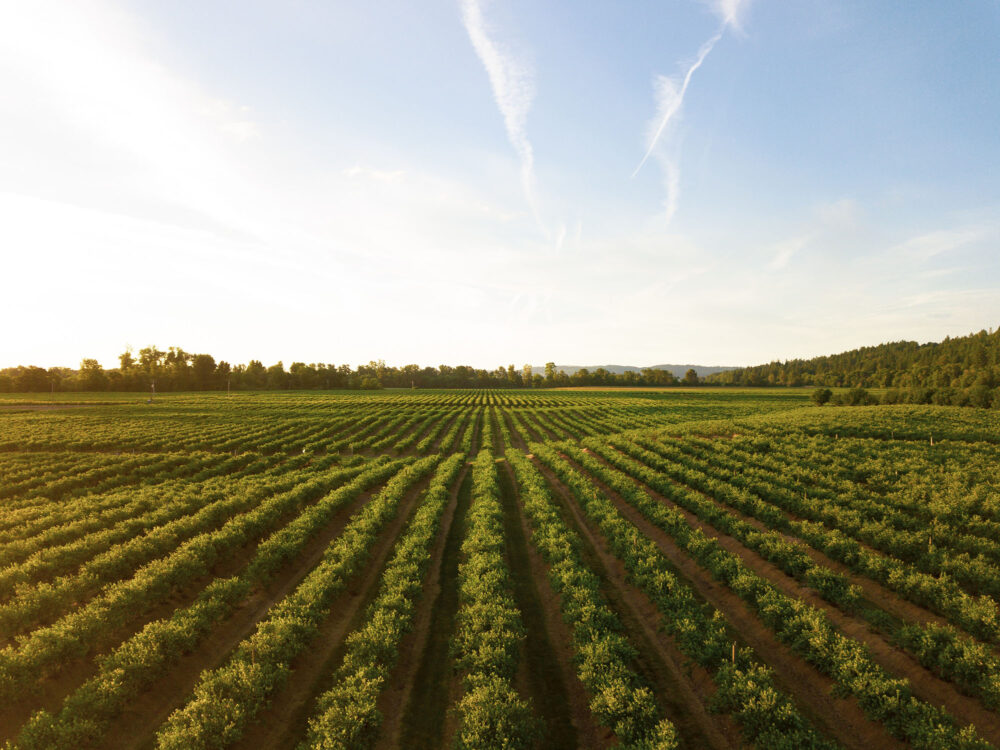Farmers have the onerous task of feeding the world’s people. Although they make up just 1.3% of the total U.S. population, farmers are responsible for feeding over 330,000,000 citizens daily and exporting food all over the globe. This immense feat would be impossible without synthetic fertilizers. To the average person, synthetic fertilizer is simply a tool to help backyard flowers grow and grassy lawns flourish. However, fertilization is a much more nuanced process that is crucial to our world’s food supply. In fact, a staggering 50% or more of today’s food production is dependent on synthetic fertilizer.
Most commercial fertilizers sold in the market now are synthetic and contain three primary macronutrients: nitrogen, phosphorous and potassium. Sulfur is also growing in importance in recent years, but it is not as prevalent in agricultural applications as the aforementioned. Some of these nutrients can create associated runoff from fields when not managed correctly. This issue has been in focus for the last several decades, and farmers are seasoned at making nutrient management plans that quantify and measure how much of each nutrient comes onto the land while monitoring levels of saturation on a regular basis. Natural, controlled-release fertilizer can aid farmers in continuing to (1) reduce the nutrient burden in waterways and (2) avoid unintended nitrous oxide (N2O) air emissions.
With growing demand to provide food for a burgeoning global population and increasing environmental standards, what are the alternatives that are sustainable for farmers of any size? The answer: technologically-advanced natural fertilizers.
A shift in focus from synthetic fertilizer production, which is energy intensive and reliant on foreign supply chains, to fertilizer production that inherently increases nitrogen use efficiency, like natural, controlled-release fertilizers, will help considerably.
What agricultural emissions are we up against?
When assessing the environmental impact of fertilizers, we too often focus on emissions and runoff after fertilizer application. However, the GHGs emitted during the production and transport of synthetic fertilizers account for about 40% of synthetic fertilizers’ GHG emissions. These cannot be overlooked. Further, according to the IPCC, the use of synthetic fertilizers has increased by 800% since the 1960s and is projected to grow by another 50% by 2050.
Moreover, synthetic nitrogen fertilizers are responsible for 2.4% of global emissions, placing them among the top polluting industrial chemicals. This is a prime concern for the agriculture industry, which globally accounts for about 80% of all N20emissions according to research conducted at Pennsylvania State University. It is important to highlight that N2O is about 300x more potent than carbon dioxide (CO2) in forcing temperature increases. With this in mind, our conversations and the research that informs our actions against climate change must consider N2O emissions alongside ongoing efforts to reduce total GHG emissions. Feeding the world while reducing GHG emissions from fertilizer is a significant task, and animal waste needs to be used efficiently in the fertilizer production process to help make progress toward our climate goals.
Synthetic vs. Natural Fertilizers
Synthetic fertilizers are carbon-intensive. They require a significant amount of energy to produce, primarily because of their high ammonia content (the primary source of nitrogen). Traditionally, the production of synthetic fertilizers requires us to burn fossil fuels, thereby emitting additional CO2. Even though this practice, known as the Haber-Bosch process, was created in the early 1900s before environmental concerns were mainstream, it remains popular today.
Synthetic fertilizers can be detrimental to the health of our soil and water supply and contribute to climate change in surprising ways. On average, crops absorb about 20-30% of the nitrogen supplied by a farmer’s synthetic fertilizer. The unused nitrogen contributes to runoff, creating vast dead zones in waterways, eating away ozone in the atmosphere, contaminating groundwater, and decreasing soil biodiversity.
On the opposite side of the spectrum, many natural, thoughtfully produced fertilizers feature slow or controlled-release technology that provides essential nutrients for soil for 8-10 weeks or more. Natural and organic slow, controlled-release fertilizers better adhere to the needs of crops over time because they emit nitrogen when plants need it, resulting in less nitrogen lost to the environment and reduced runoff. An additional benefit is gained when these natural fertilizers are produced from animal waste high in micro- and macronutrients; natural fertilizers that contain humic acid, for example, help soils become more productive with fewer inputs by supporting soil microbial activity.
Compared to synthetic fertilizer, advanced natural fertilizer has the potential to meet more of our farmers’ needs, at all levels and sizes of production, with a more sustainable approach to food production.
The future of fertilizers
Although the benefits of opting for natural fertilizer are apparent, many farmers remain leery of transitioning away from traditional synthetic fertilizer. Previous USDA research reported that economics was the primary reason why slow and controlled-release fertilizers had not been widely adopted. With limited supply and high prices, the risk for farmers was too high.
We offer two potential solutions: improve demand for these natural fertilizers by increasing supply, and ensure the price of natural fertilizer is more affordable. Now is the time to create favorable market conditions for naturally derived fertilizers that provide environmental benefits, improve soil health, and boost crop yields.
By producing a cost-effective, environmentally friendly, natural fertilizer that is accessible to conventional and organic farmers and gardeners at all levels of operation, we can reduce GHG emissions and pollution, and take a major step toward our climate goals.


